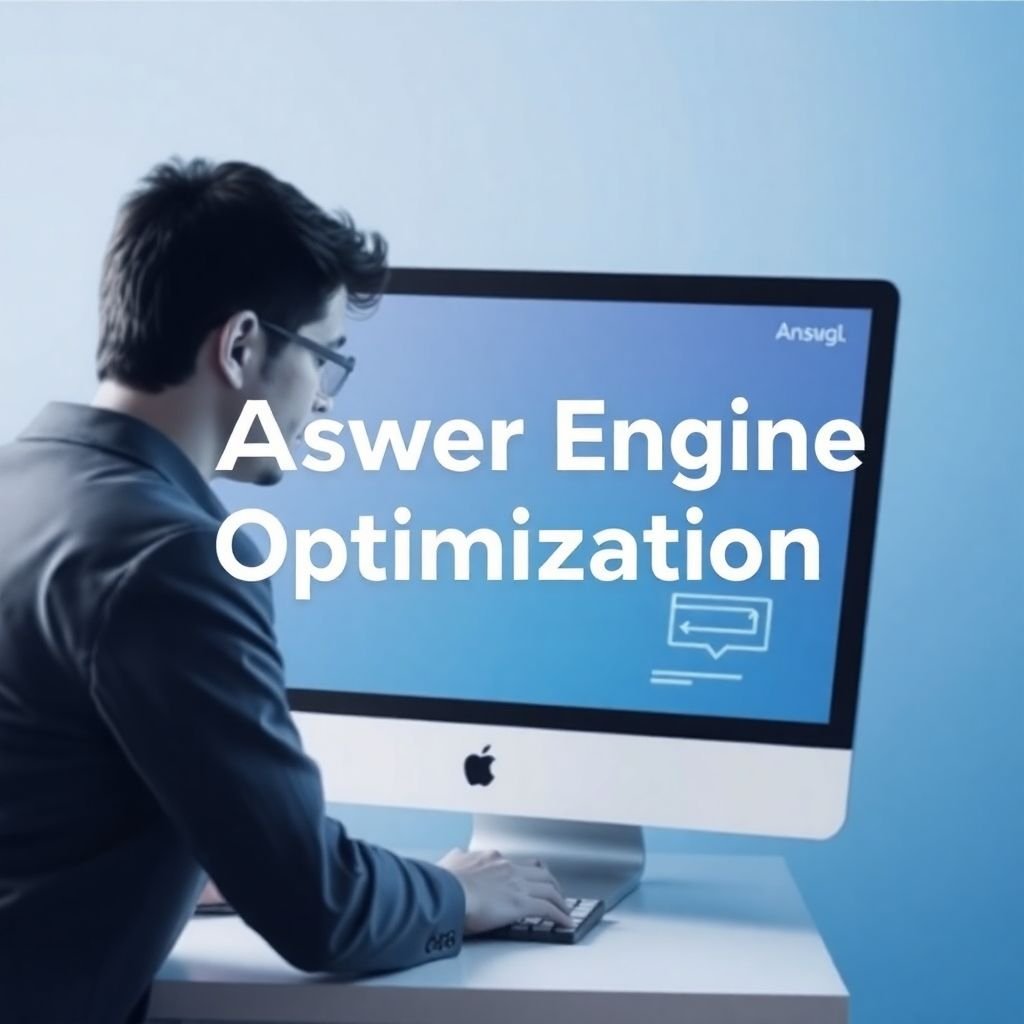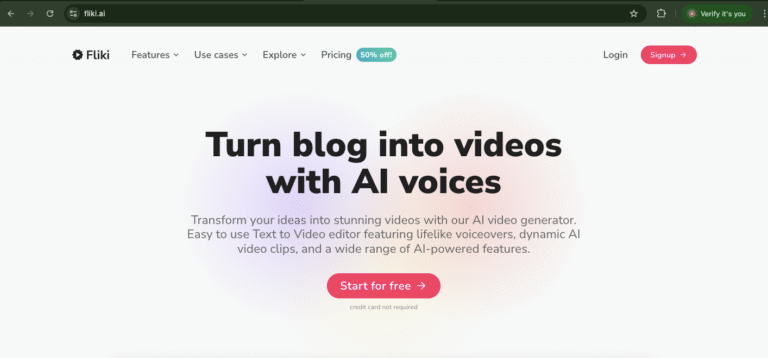What is Answer Engine Optimization (AEO)?

Introduction to Answer Engine Optimization (AEO)
In the ever-evolving landscape of digital marketing, Answer Engine Optimization (AEO) has emerged as a critical component for businesses aiming to enhance their online visibility and engage effectively with their target audience. AEO refers to the strategic approach of optimizing content specifically to answer user queries. This concept has gained momentum as search engines have transitioned from simple keyword matching to more sophisticated, answer-driven technologies, creating a need for a paradigm shift in content creation and optimization.
The significance of AEO lies in its ability to address the growing trend of users seeking direct answers to their questions through voice assistants and search engines. Traditional search engine optimization (SEO) primarily focused on ranking websites based on keyword relevancy and backlinks. However, with the advent of smart technologies and AI-driven platforms, users expect instant, contextual answers rather than mere links to web pages. AEO adapts to this changing user behavior by prioritizing content that provides concise, relevant, and accurate information to directly address user inquiries.
Implementing AEO strategies offers several benefits for businesses and content creators. Firstly, it fosters a deeper connection with users by delivering immediate value in response to their needs. This can lead to increased engagement, higher click-through rates, and improved user satisfaction. Secondly, by focusing on optimizing for specific questions or topics, businesses can secure prominent positions in featured snippets, knowledge panels, and voice search results, thereby enhancing their online visibility. Additionally, AEO fosters a competitive advantage by enabling brands to differentiate themselves in crowded markets, aligning their content strategies with the evolving expectations of consumers.
As the digital landscape continues to shift, it becomes essential for marketers and content creators to embrace AEO practices, setting the stage for a future where information accessibility and user experience are paramount.
Ai Prompts for Content Creation
The Evolution of Search: From SEO to AEO
The landscape of search engines has undergone significant transformations since their inception, adapting to the changing needs and preferences of users. In the early days, Search Engine Optimization (SEO) predominantly focused on optimizing content to rank higher in search results. However, as internet users have grown increasingly sophisticated, their search behaviors have evolved from simply acquiring links to seeking direct answers to their queries. This shift has paved the way for Answer Engine Optimization (AEO), a strategy that is tailored to meet these new demands.
Traditional SEO often emphasizes keyword targeting and ranking on search engine results pages (SERPs), yet it frequently falls short when it comes to addressing users’ desires for quick, concise information. With the rise of digital assistants and smart devices, users expect immediate responses without having to sift through multiple pages. According to a report from Google, 70% of searches now result in a click on a result that provides a direct answer, illustrating a stark contrast to the more traditional click-and-scan approach of earlier internet users. This underscores the limitations of traditional SEO and emphasizes the necessity for a more refined approach—one that AEO provides.
AEO focuses on optimizing content not only for visibility but also for relevance and accessibility of information. It centers around understanding the intent of the user’s query and delivering precise answers quickly. This evolution is supported by the increasing integration of artificial intelligence and natural language processing in search algorithms, allowing engines to comprehend user intent more effectively. Furthermore, studies indicate that market share for voice and AI-powered search has surged, urging businesses to adapt their strategies accordingly. As users continue to prioritize efficiency and direct answers, AEO is poised to become an indispensable element of digital marketing strategies, ensuring that businesses remain relevant in a rapidly evolving search environment.
Key Components of Answer Engine Optimization
To harness the true potential of Answer Engine Optimization (AEO), it is vital to understand its key components, which include user intent, structured data implementation, and optimization for voice search. Each of these elements plays a significant role in enhancing the AEO strategy of a business.
First and foremost, understanding user intent is crucial for effective AEO. It involves analyzing and interpreting the motivations behind a user’s search query. Businesses must focus on creating content that aligns with the specific questions users are asking. This can be achieved through keyword research and utilizing tools that provide insights into trending search terms. Tailoring content based on user intent not only boosts engagement but also increases the likelihood of appearing in answer engines and SERPs (Search Engine Results Pages).
Secondly, the integration of structured data is essential in optimizing for AEO. Structured data refers to a standardized format for providing information about a page and classifying the page content. Implementing schema markup helps search engines better understand the context of the content, which is crucial for delivering accurate answers to user queries. For businesses, utilizing schema can greatly improve visibility in search results and increase click-through rates. It is advisable to regularly review and update structured data as it evolves to ensure compliance and relevancy.
Finally, optimizing for voice search is increasingly important in today’s digital age, where many users prefer voice assistants for obtaining information. AEO strategies should include creating concise, straightforward answers that are capable of being easily communicated by voice interfaces. Utilizing conversational language and focusing on long-tail keywords can enhance the chances of being featured as a voice search result. Moreover, businesses should strive to ensure their websites are mobile-friendly, as this aligns with the growing trend of voice search conducted through mobile devices.
In summary, understanding user intent, implementing structured data, and optimizing for voice search are integral components of Answer Engine Optimization. By focusing on these key areas, businesses can improve their AEO efforts and effectively meet the needs of their audience.
Creating High-Quality, Answer-Focused Content
Crafting high-quality, answer-focused content is essential for optimizing for answer engines. The foundation of this approach lies in thoroughly researching the common queries that users have related to your subject matter. One effective method to identify these inquiries is by utilizing tools such as keyword planners, forums, and social media platforms, where potential audience discussions may reveal the questions that are frequently asked. Additionally, examining search engine results pages (SERPs) can provide insights into the types of questions being posed, as well as the formats that are most effective in engaging with users.
Once you have gathered a list of common questions, employing a structured question-and-answer format can significantly enhance the readability and accessibility of your content. This format allows you to address individual queries directly, fostering a more intuitive understanding for readers seeking precise information. It is advisable to prioritize clarity and conciseness in your responses; this means using straightforward language and avoiding unnecessary jargon. Each response should be tailored to be as informative as possible while providing direct answers, thus reinforcing your content’s authority and relevance.
Moreover, incorporating images and other media elements can elevate user engagement and retention. Visuals not only break the monotony of text but also serve to illustrate complex concepts more clearly, making it easier for users to grasp the information presented. Infographics, videos, and charts can complement written answers and provide additional layers of understanding. It is crucial to ensure that any media used is relevant and enhances the content rather than detracts from it. In doing so, you will create a rich user experience that fulfills the potential of answer engine optimization.
Leveraging Internal and External Links for AEO
In the context of Answer Engine Optimization (AEO), linking strategies play a crucial role in enhancing content visibility and user experience. Internal linking, which refers to the practice of linking to other pages within the same domain, helps to create a well-structured content hierarchy. By strategically placing internal links, content creators can guide users through a logical flow of information, thereby improving their overall engagement with the website.
Moreover, a robust internal linking strategy not only aids user navigation but also allows search engines to better understand the relationship between different pieces of content. This understanding can enhance the chances of answering user queries effectively, which is at the core of AEO. To optimize internal linking, it is advisable to use descriptive anchor text that clearly indicates the content of the linked page, thereby enriching the user experience and aiding search engine algorithms in discerning context.
Equally important is the incorporation of external links to authoritative sources. These links serve multiple functions, including fostering credibility and trustworthiness with your audience. In AEO, establishing connections to respected entities within your field can significantly bolster your content’s reliability, ultimately making it a preferred answer within search engine results. External links also lend users the opportunity to delve deeper into a subject, which enhances the educational value of the content.
To maximize the benefits of linking in AEO, a balanced approach combining both internal and external links is recommended. Begin by embedding high-quality internal links throughout your content while ensuring that external links direct users to resources that are relevant and credible. This strategic linking not only improves user experience but also contributes to the overall effectiveness of your AEO efforts.
The Role of Video Content in AEO
In the evolving landscape of digital marketing, video content has emerged as a significant player in answer engine optimization (AEO). Search engines increasingly prioritize video as part of search results, recognizing its capacity to provide high-value, engaging content that answers user queries effectively. This shift in preference emphasizes the importance of optimizing video content to align with AEO strategies. Incorporating videos into marketing efforts not only enhances user experience but also boosts visibility in search results.
To optimize video content for AEO, it is essential to start with relevant keywords. Similar to written content, videos should feature keywords that reflect the topics addressed in the footage. Names, descriptions, and tags should include keywords that potential viewers are likely to search for. This practice enhances discoverability and improves the likelihood of a video appearing in search results associated with those terms. Additionally, creators should focus on crafting engaging thumbnails that compel users to click. A compelling thumbnail can significantly increase click-through rates, drawing viewers’ attention amidst a sea of visual content.
Embedding videos within blog posts serves a dual purpose: it enriches the written content and contributes to SEO. When users encounter videos directly on a webpage, it increases the likelihood of extended engagement, reducing bounce rates. Furthermore, video content can clarify complex information, making it digestible for the audience. Platforms such as YouTube play a crucial role in this equation, offering abundant resources for video optimization and providing a vast audience for content creators. By leveraging YouTube’s platform, marketers can enhance their video strategies and improve AEO efficiency.
As video continues to gain traction within search engine results, the implications for businesses and marketers are substantial. Establishing a robust video content strategy that prioritizes optimization for AEO is not only a necessity but also a significant opportunity for brands aiming to improve their online presence.
Tools and Resources for AEO Success
To effectively implement Answer Engine Optimization (AEO), leveraging the right tools and resources is essential. The following compilation highlights various platforms that can strengthen AEO strategies through enhanced keyword research, analytics, and content management.
One key tool is SEMrush, a comprehensive marketing toolkit that provides in-depth keyword research capabilities. SEMrush allows users to identify trending search queries and evaluate the competitive landscape, which is crucial for orienting content toward user intent. This platform’s capabilities also enable marketers to track how effectively they are optimizing for AEO, ensuring that the content aligns with the questions users are asking.
Google Analytics is another pivotal resource, providing detailed insights into website performance metrics. It enables users to monitor website traffic, user behavior, and conversion rates, all of which are vital for gauging the success of AEO initiatives. With this data, marketers can adapt their strategies based on user engagement and improve the relevance of their content.
Furthermore, Answer Public serves as a beneficial tool to visualize user questions and search queries. By providing insights into the specific questions individuals are asking about particular topics, this platform helps in creating targeted content to meet those needs. This directly supports AEO by facilitating the generation of relevant content that answers users’ queries.
Content management systems like WordPress also play a significant role in AEO success. With its various plugins and SEO tools, WordPress allows users to optimize content easily. In addition, it supports schema markup, which is crucial for answering engine optimization. Overall, employing the right combination of these tools can greatly enhance AEO efforts and lead to improved visibility in search engines.
Measuring AEO Performance: Metrics and KPIs
To evaluate the effectiveness of Answer Engine Optimization (AEO) strategies, businesses need to establish a comprehensive set of metrics and key performance indicators (KPIs). These measurements offer critical insights into how well AEO efforts are translating into tangible results, enhancing overall online visibility and user satisfaction. The primary focus should be on tracking organic traffic, user engagement metrics, and conversion rates, as these elements directly correlate with the success of AEO initiatives.
Organic traffic serves as a fundamental indicator of AEO performance. By monitoring the volume of visitors coming to a website through unpaid search engine results, businesses can ascertain whether their AEO tactics are successfully attracting relevant audiences. Tools such as Google Analytics can aid in this analysis by providing detailed reports on traffic sources, allowing for a refined understanding of user behaviors.
User engagement metrics are equally crucial in gauging the effectiveness of AEO strategies. These metrics encompass various user actions such as bounce rates, time spent on site, and pages per session. High engagement levels signify that users are finding valuable information that answers their queries. Monitoring these behaviors helps to adjust content strategies effectively, ensuring that the information presented aligns with user expectations.
Additionally, conversion rates should be meticulously analyzed, as they represent the ultimate goal of any AEO initiative. This metric indicates the proportion of visitors who complete desired actions, such as signing up for newsletters or making purchases. By linking conversion data with specific AEO tactics, businesses can identify which elements yield the best results and refine their approaches accordingly.
Finally, setting up effective tracking involves implementing analytical tools that align with business objectives. Utilizing dashboards to visualize key data points can greatly enhance reporting capabilities, allowing stakeholders to make informed decisions based on actionable insights. Altogether, by focusing on these essential metrics and employing tools for thorough tracking, businesses can achieve significant improvements in their AEO performance and user experience.
Future Trends in Answer Engine Optimization
The evolution of technology, particularly in artificial intelligence (AI) and machine learning, is set to significantly shape the landscape of Answer Engine Optimization (AEO). As user behavior continues to shift towards seeking concise, clear answers, AEO strategies must evolve to meet these changing demands. Future trends will likely center around the ability of search engines to provide contextually relevant information that aligns with individual user preferences and query nuances.
One major advancement anticipated is the integration of more sophisticated natural language processing (NLP) capabilities. This enhancement will enable search engines to better understand user queries, decipher intent, and deliver answers that are hyper-relevant. With machine learning algorithms analyzing vast amounts of data, search engines could increasingly tailor responses based on user demographics and historical interaction patterns, thus personalizing the search experience significantly.
Additionally, voice search technology is projected to dominate the future of AEO. As consumers increasingly turn to voice-activated devices for information retrieval, optimizing for spoken queries will be crucial. This shift demands a reevaluation of keywords and content strategies, focusing more on long-tail keywords and conversational phrases that mimic natural speech. Consequently, AEO practitioners must stay abreast of emerging speech recognition technologies to effectively reach their target audience.
Furthermore, the rise of structured data and knowledge graphs will play a vital role in how information is represented and accessed. Enhanced structured data protocols may lead to greater visibility for content as search engines leverage these insights to generate informative snippets, thereby influencing click-through rates positively. As industry experts have noted, understanding these emerging trends and adapting accordingly will be essential for businesses aiming to maintain competitive advantages in the digital landscape.
In conclusion, the future of Answer Engine Optimization promises to be an exciting yet challenging frontier. With advancements in AI, machine learning, and speech technology, businesses must embrace these changes and refine their content strategies to remain relevant in an increasingly automated and personalized web environment.
for more info, feel free to read this article below
Business Insider – What is AEO (Answer Engine Optimization)?






The rise of AEO really highlights how user behavior is evolving—it’s no longer just about ranking high but about delivering immediate, relevant answers. It would be great to see a follow-up on how brands can balance AEO with in-depth, long-form content that still drives engagement.